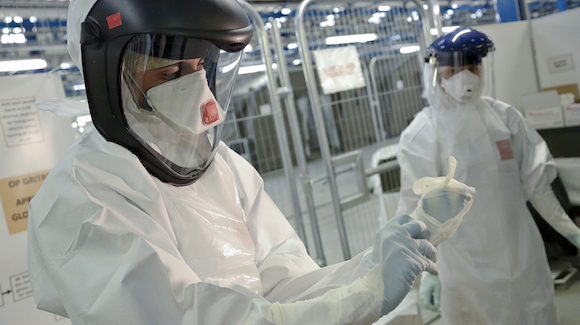The Neonatology Channel
January 24, 2012 • Neonatology, Nurses/NP/PA, Ob/Gyn, Reuters Health • The Doctor's Channel Newscast
NEW YORK (Reuters Health) – Whether suspected intrauterine growth restriction (IUGR) at term is managed by induction of labor or by expectant monitoring, the degree of neonatal morbidity is similar and mild, according to a Dutch study.
However, the investigators found that neonatal ICU admissions are lower after 38 weeks gestational age than at 36 and 37 weeks with either strategy. “So if induction to pre-empt possible stillbirth is considered, it is reasonable to delay until 38 weeks, provided watchful monitoring,” they advise.
Dr. Kim E. Boers, at Bronovo Hospital in The Hague, and colleagues explain that they recently conducted a prospective study to investigate whether induction of labor for pregnancies with suspected IUGR beyond 36 weeks gestation reduced neonatal morbidity and mortality compared with an expectant approach with fetal and maternal monitoring.
Overall, outcomes were similar in the two arms, but more newborns in the induction group were admitted for neonatal care while those in the expectant group were more likely to be severely growth restricted.
For the current study, published online January 16 in the American Journal of Obstetrics and Gynecology, the team conducted a detailed secondary analysis of the data to determine the net effect of the two strategies on neonatal morbidity.
Morbidity was quantified using the Morbidity Assessment Index for Newborns (MAIN) score, which tallies factors such as Apgar scores, cord blood pH and need for intubation. A final score below 150 is categorized as minimal morbidity, 151-500 represents mild morbidity, 501-800 moderate morbidity, and more than 800 indicates severe morbidity.
The distribution of MAIN score categories did not differ significantly between the 308 babies in the induction group and the 315 in the expectant management group, the authors found.
Specifically, the prevalence of minimal morbidity was 84.1% vs 81.9%, respectively. Corresponding figures were 15.3% vs 16.2% for mild morbidity, 0.7% vs 1.6% for moderate morbidity and 0% vs 0.3% for severe morbidity, the report indicates.
However, there were fewer intermediate care admissions in the expectant group (111) than among infants in the induction group (143), who were born an average of 10 days earlier than their counterparts. Given the comparable degree of morbidity in the two groups, Dr. Boers and colleagues surmise that this was probably an effect of neonatal admission policies based on gestational age rather than an indication of serious morbidity.
“This means that those who believe for other reasons that induction may pre-empt late stillbirths in this group, can be reassured that such a policy does not appear to increase short-term neonatal morbidity,” they conclude – but deferring induction until 38 weeks along with strict monitoring “may prevent complications of late prematurity.”
SOURCE:
Neonatal morbidity after induction versus expectant monitoring in intrauterine growth restriction at term – a subanalysis of the DIGITAT RCT
Am J Obstet Gynecol 2012.





